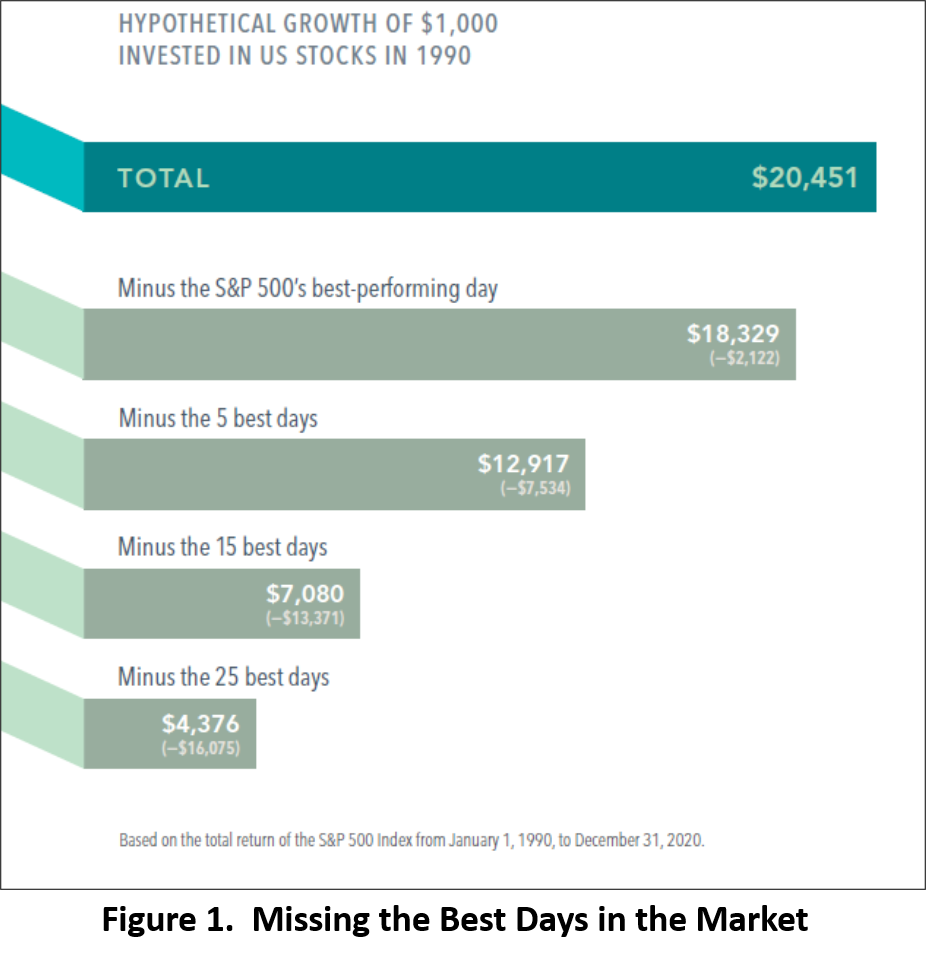Markets Versus Mattresses
As one who appreciates the scars on my knuckles from excess dragging upon the ground, I tend to like simple concepts. When it comes to investing, my head explodes right before the last syllables of phrases like yield curve, factor regression, and triple-leveraged inverse ETF. I can handle more soothing and mundane phrases like Dollar-Cost Averaging, Lump-Sum, market timing. Wait, did I just say market timing—the 8th deadly sin? Clearly this outrage deserves remedy!
Those who’ve been burned by the ups and downs of the stock market (read: bipeds with 23 chromosome pairs) have generally wished for a crystal ball in the aftermath. If only we’d known that the market was going to crash—we would have sold out to cash and then bought back at the bottom! Or, “If only I’d known that during the nascent stage of a once-in-a-century pandemic, the stock market would hiccup and then continue it’s unprecedented bull run!” Though, to make these forgivable wishes, is to consider the dark art of market timing.
Time in the Market Beats Timing the Market
We know that buy low, sell high is a right and proper way to grow an investment portfolio, but the devilish detail—When is the price low and when will it be high?” complicates this investing guidance.
The financial infotainment complex on TV and the internet, if indulged, will have our blood so full of dopamine and cortisol from trying to time the market that we’d have to spend any earnings on trips to the doctor to level things out again. The financial infotainment world is usually about getting our attention and keeping it, not about sound investing behavior.

Just for fun, let’s consider some efforts at timing the market. Figure 1 examines a hypothetical investment in the S&P 500 Index of $1,000 from January 1, 1990 to December 31, 2020. I’ll point out that this period includes enough fun little historical events to have Billy Joel rewrite “We Didn’t Start the Fire” about 7 times, such as:
- Two Gulf Wars and a Central Asian War
- Two Wars in the Balkans
- 7 Presidential Elections (where we are always assured that the sky will indeed fall)
- 2 Presidential Impeachments (plus one in the hopper)
- September 11th
- Dot Com Boom and Bust
- Housing/Financial Crisis
- COVID-19 Pandemic
You get the picture—it’s planet Earth and there’s usually a decent amount of market-influencing activity going on here.
So back to Figure 1… The $1,000 should grow to $20,451 if we just buy and hold then go play golf. But if we decide to get clever and try to out-OODA that which can’t be out-OODA’d—hang on! If your money is in the mattress instead of the market for the best day, you miss out on 10.3% of the growth. If you miss the best 5 days, you miss 36.8%. Best 15 days… 65.3%. And if you miss the best 25 days over those 20 years, you miss 78.6% of the growth. You need to pick the best 25 days out of about 7,300.
Absent a DeLorean with special modifications in your garage, there is one reasonable and rational choice—spend time in the market, not timing the market.
Dollar-Cost Average versus Lump Sum
In 2012, Vanguard did an excellent study to try to answer the question, “If I have a chunk of dough, should I invest it via lump sum at one time, or dollar-cost average it over a period?” I’ll summarize the findings:
- If you expect the long-term trend of the market to be upward, then Lump Sum beats Dollar-Cost Averaging about two thirds of the time over rolling 10-year periods
- The spread by which returns for the Lump Sum investment beat the Dollar-Cost Average investment range from 1.3% to 2.3%
- Emotions matter.
Unpacking this a bit, the first finding does require a long-term view of the market. If your investment return need is 5.58 years out, you don’t have the time horizon to consider returns over 10-year periods. But the reality is that the forces underpinning our markets (at least in the U.S.) such as property rights, rule of law, and capitalism generally create upward pressure on markets over time. The pie keeps growing, despite occasional shrinkage.
The second consideration that stands out to me is the fairly small delta between Dollar-Cost and Lump Sum returns. There’s no doubt that the compounding effects of 1-2% difference are enormous over 5 decades of returns. Let’s look at a hypothetical investment of $10K over 50 years at different compound annual growth rates (CAGR):
- 7%: $294,570
- 3%: $538,794
- 3%: $853,116
There’s no arguing that the compounding effects of extended periods truly matter. So, while either method is better than stuffing money in a mattress, if you’re in it for the decades, getting started is crucial.
Finally, as I’ve talked about before here, investor behavior matters. A lot. Market swings affect each of us differently. Uncle Warren (Buffet) advises that we should be “fearful when others are greedy, and greedy when others are fearful…” which is easier said than done. If you’re reading this, I’ll wager that you experienced the years 2007-2009, and probably the Dot Com bubble—and definitely the COVID-19 whatever-it-was. I bring up these investor trials-by-fire to suggest that hopefully, you’re developing a sense of risk when the market fluctuates. Based on that sense, you might have an idea of what’s more appealing—Dollar-Cost Average, or Lump Sum? The math might be interesting, but it’s not relevant if you can’t bring yourself to act upon it.
You’re likely on the right path as long as you choose one or the other. Continually jumping in and out of investments sets you up to miss the best days, because—how are you going to know when those best days happen?
Cleared to Rejoin
Keeping investing as simple as possible is what makes investing possible for many of us. If the chatter of armchair day-traders has your head spinning about when to buy low and sell high, keep this in mind: time in beats timing. As for how to put money to work, Dollar-Cost Averaging or Lump Sum… the math says Lump Sum. But if analysis paralysis is blocking your path to the starting line, just pick one and execute. Since the best investing wisdom tends to spill from Warren Buffet, I’ll close with one more thought from his anthology: The best time to buy is when you have the money. The best time to sell is never.
Fight’s On!
Winged Wealth Management and Financial Planning LLC (WWMFP) is a registered investment advisor offering advisory services in the State of Florida and in other jurisdictions where exempted. Registration does not imply a certain level of skill or training.
This communication is for informational purposes only and is not intended as tax, accounting or legal advice, as an offer or solicitation of an offer to buy or sell, or as an endorsement of any company, security, fund, or other securities or non-securities offering. This communication should not be relied upon as the sole factor in an investment making decision.
Past performance is no indication of future results. Investment in securities involves significant risk and has the potential for partial or complete loss of funds invested. It should not be assumed that any recommendations made will be profitable or equal the performance noted in this publication.
The information herein is provided “AS IS” and without warranties of any kind either express or implied. To the fullest extent permissible pursuant to applicable laws, Winged Wealth Management and Financial Planning (referred to as “WWMFP”) disclaims all warranties, express or implied, including, but not limited to, implied warranties of merchantability, non-infringement, and suitability for a particular purpose.
All opinions and estimates constitute WWMFP’s judgement as of the date of this communication and are subject to change without notice. WWMFP does not warrant that the information will be free from error. The information should not be relied upon for purposes of transacting securities or other investments. Your use of the information is at your sole risk. Under no circumstances shall WWMFP be liable for any direct, indirect, special or consequential damages that result from the use of, or the inability to use, the information provided herein, even if WWMFP or a WWMFP authorized representative has been advised of the possibility of such damages. Information contained herein should not be considered a solicitation to buy, an offer to sell, or a recommendation of any security in any jurisdiction where such offer, solicitation, or recommendation would be unlawful or unauthorized.






